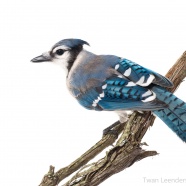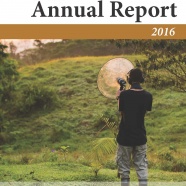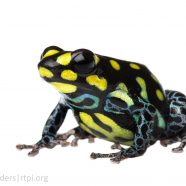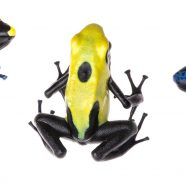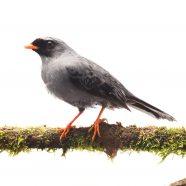Winter Blues
Blue Jays (Cyanocitta cristata) can look so vibrantly blue on sunny days, but blue coloration in animals is very rarely created by blue pigment. Instead, their stunning hues are created by refractive colors of light, breaking on microscopic structure of the feathers. Minute barbs on their feathers are specially modified to scatter light in a way that makes them appear blue, rather than showing the brown melanin that their feathers are colored with. Yes, Blue Jays are not actually blue!
Read More2016 Annual Report
Roger Tory Peterson lived his life by the motto “Learn it, Love it, Protect it”, and it’s a great way to characterize our work at RTPI! We endeavor to share with you the wonder and excitement of appreciating and exploring the natural world every day and everywhere. Please read our 2016 Annual Report to learn about the many ways that we’ve been continuing Roger Tory Peterson’s work! You can access the full report at http://rtpi.org/support-rtpi/2016-annual-report/ We hope you enjoy learning about our many initiatives!
Read MoreRanitomeya vanzolinii
One of Twan’s all-time favorite dart frogs, Ranitomeya vanzolinii. He says that they’re tiny and secretive, but whenever you manage to get a good look, they take your breath away! Photographed for the Meet Your Neighbours global diversity project.
Read MoreDyeing Poison Dart Frog (Dendrobates tinctorius)
The Dyeing Poison Dart Frog (Dendrobates tinctorius) displays great color and pattern variation throughout its extensive distribution range – each form is stunningly beautiful in its own right.
Read MoreBlack-faced Solitaire (Myadestes melanops)
This is the Black-faced Solitaire (Myadestes melanops), a species more often heard than seen. It has a beautiful song, so nice in fact it is in danger from the pet trade. This was actually a surprise find one morning because we were at a site lower in elevation that they’re normally found. These birds are endemic the the highland forests of Costa Rica and Panama preferring elevations of over 750 meters to reside in. When not out singing, it’s a species that can be found skulking around, feeding on berries in lower vegetation. Most likely the reason it being found at a lower...
Read More



